Metal Fatigue and Corrosion
Safety Spotlight: Aging Aircraft
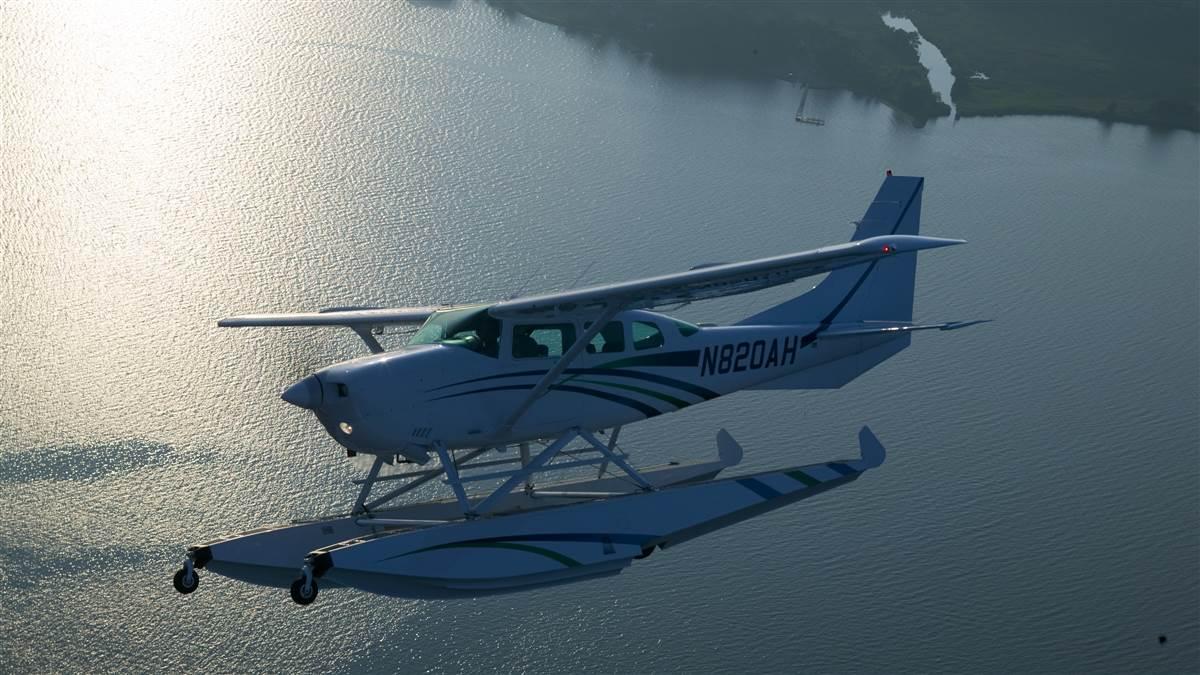
As the general aviation fleet ages, metal fatigue is a growing concern that—based on usage, maintenance, and damage history—affects each aircraft differently.
Metal Fatigue Life
All metal has a natural fatigue life, caused by repetitive loads that put stress and strain on the aircraft’s structure. Severe loads can further accelerate fatigue. See one way in which repetitive loads are placed on an aircraft.
Fatigue Cracks
When fatigue leads to a crack, there are two important considerations:
- Location—A crack on a structural component (e.g., a wing spar) may be critical, whereas a crack on a non-structural component (e.g., a wing tip, wheel pant, etc.) is never critical.
- Severity—A crack is only considered critical if it has affected the structural strength of an aircraft or aircraft component—even a very small crack may be critical.
Fatigue Cracking
See a fatigue crack grow from a detectable size to a critical size.
Key Metal Fatigue Factors
 Metal fatigue can be exacerbated by:
Metal fatigue can be exacerbated by:
- Flight activities that place repetitive or additional stress on an aircraft
- Improperly performed maintenance
- Accident or incident damage
- Corrosion
- Deformities and defects that can occur in metal
Corrosion
Corrosion is the deterioration of metal caused by a reaction with its environment. It is another key factor that can either contribute to—or exist independent of—metal fatigue.
| Corrosion Types | Cause | Symptoms | What It Looks Like |
|---|---|---|---|
| Surface | Chemical or electrochemical attack on the metal’s surface | Dull, powdery, or frosted surface, indicated by lifting or blistering paint |  |
| Pitting | Advanced surface corrosion resulting in loss of material in the affected area | Tiny holes or pits | 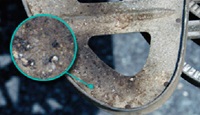 |
| Filiform | Exposure to high humidity | Worm-like traces beneath the paint | 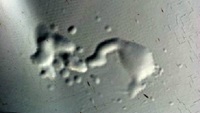 |
| Fretting | Relative movement between two adjoining surfaces | Small, dark smudges near rivets and electrical connections, which are commonly mistaken for oil, grease, or dirt | 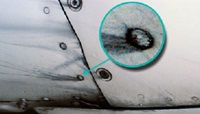 |
| Intergranular | Delamination of the metal’s grain boundaries, sometimes caused during heat treatment | Exfoliation or flaking at the surface—initial stages (internal) are best detected by a non-destructive inspection (NDI) | 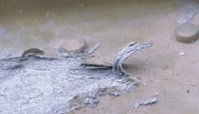 |
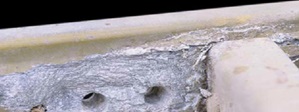 Metal Deformities and Defects
Metal Deformities and Defects
While not common, deformities and defects—like microscopic cracks and premature corrosion—can occur in an aircraft’s structure. These can contribute to metal fatigue and promote further corrosion.
Finding Signs of Metal Fatigue and Corrosion
Some signs of aging can be seen visually (with or without a magnifying glass), but signs of metal fatigue and intergranular corrosion are not typically visible to the naked eye, and are best detected by means of a non-destructive inspection (NDI). This type of inspection can help find corrosion and fatigue cracks early.
Stress concentrations or stress points are terms often used to define an area of an aircraft's load-bearing structure where stresses above the component's fatigue limit are likely to occur. These areas are often given priority during an NDI, and may be included in a manufacturer-specific maintenance program for continued airworthiness. A few common methods of non-destructive inspections (not including visual) include:
*Eddy Current—This method is used to detect cracks caused by fatigue and stress corrosion beneath the material's surface.
*Liquid Penetrant—When exposed to a black ultraviolet light, a penetrating liquid applied to the material can expose irregularities on the surface that are too small to be seen by normal visual inspection.
*Magnetic Particle—A method for detecting cracks, laps, seams, voids, pits, subsurface holes, and other discontinuities on ferrous metals, such as iron and steel.
*Ultrasonic Testing—Ultra-high frequency sound waves are transmitted into a material to detect imperfections within the material, or changes in material properties. It is typically used to detect subsurface defects, or defects originating from surfaces not accessible without disassembly or removal. It can also be used to detect corrosion of various materials.
*Must be performed by a qualified technician or mechanic.
Tip: Learn about other non-destructive inspection methods in Chapter 5 of AC 43.13-1B.